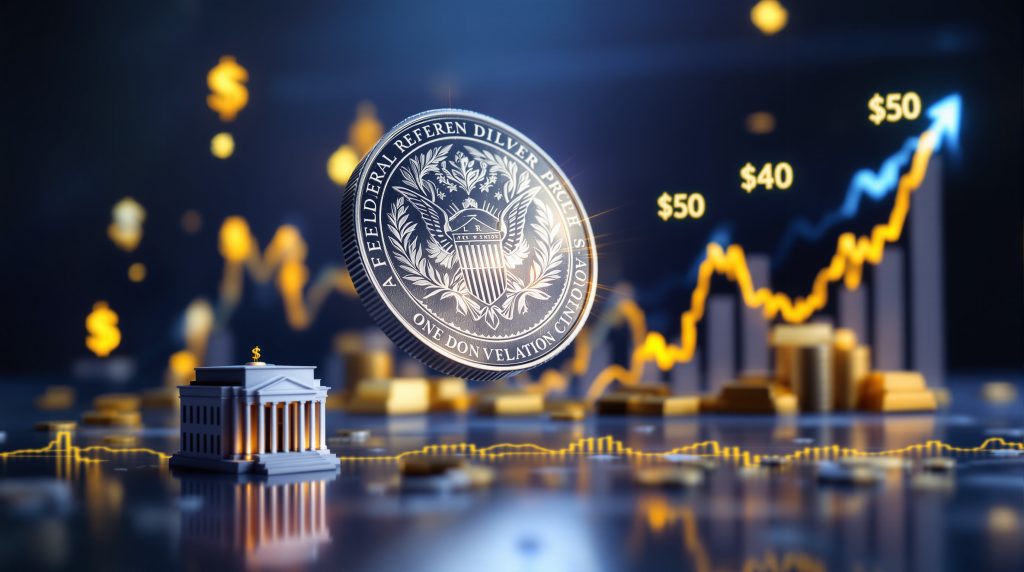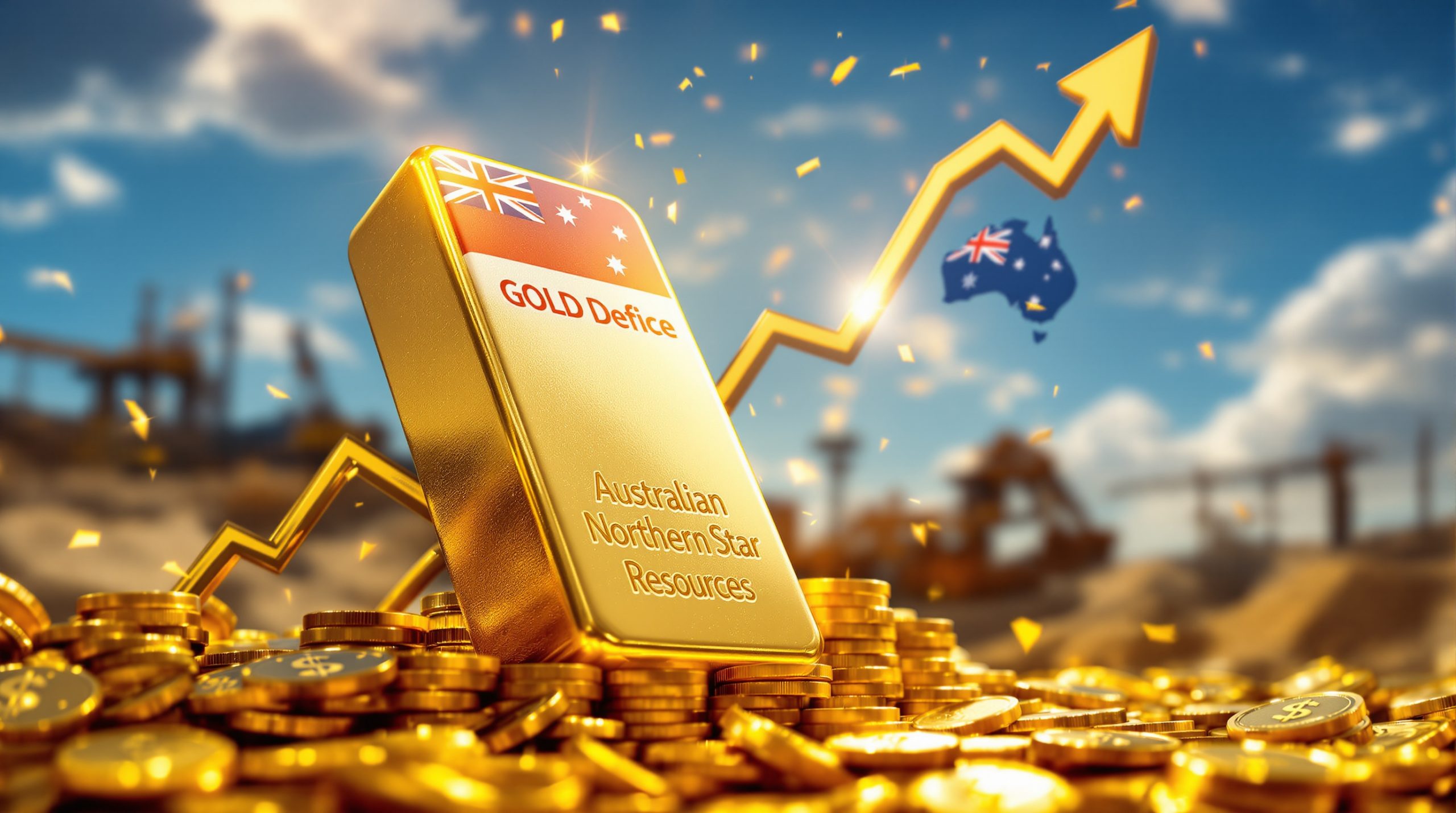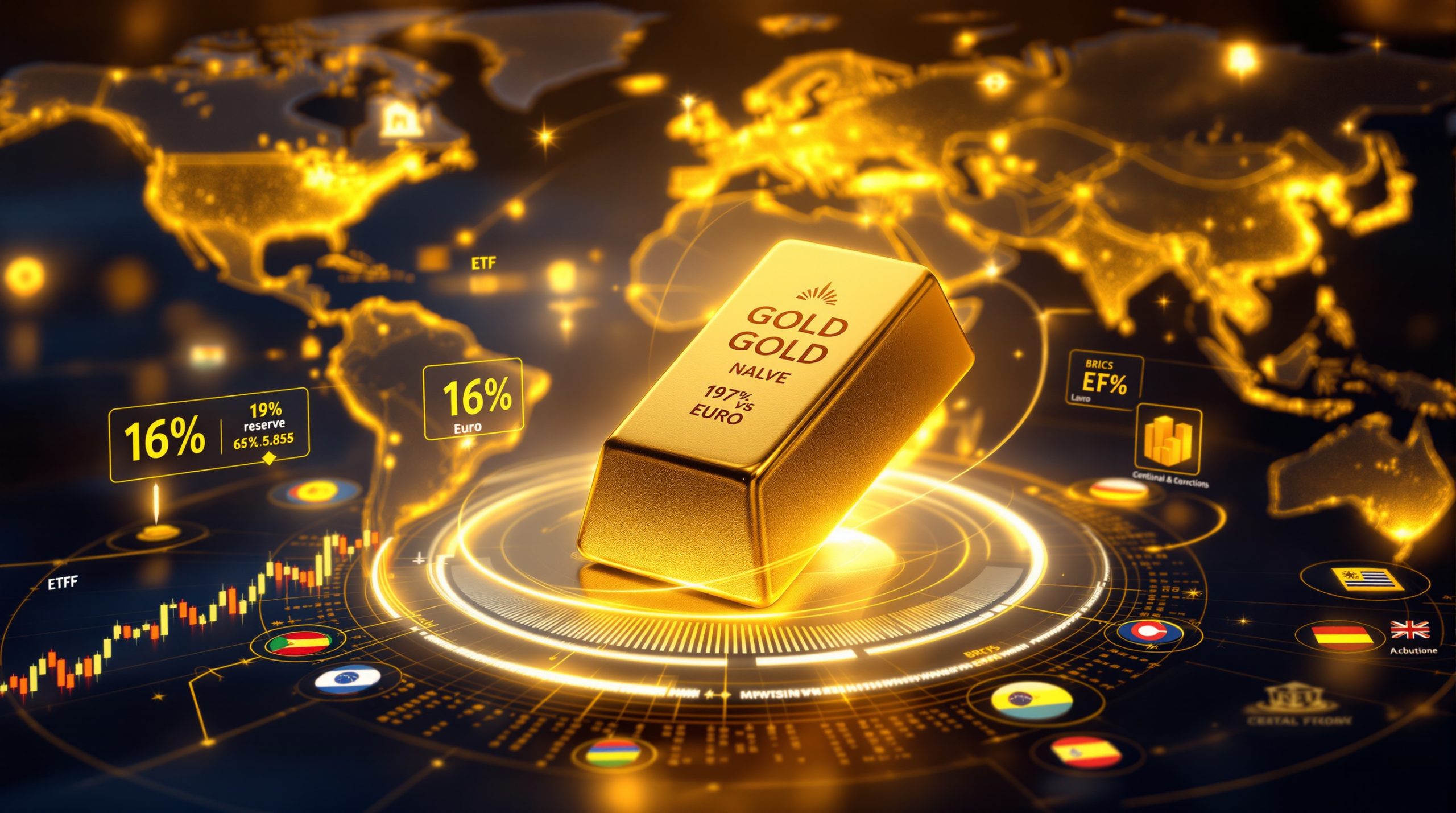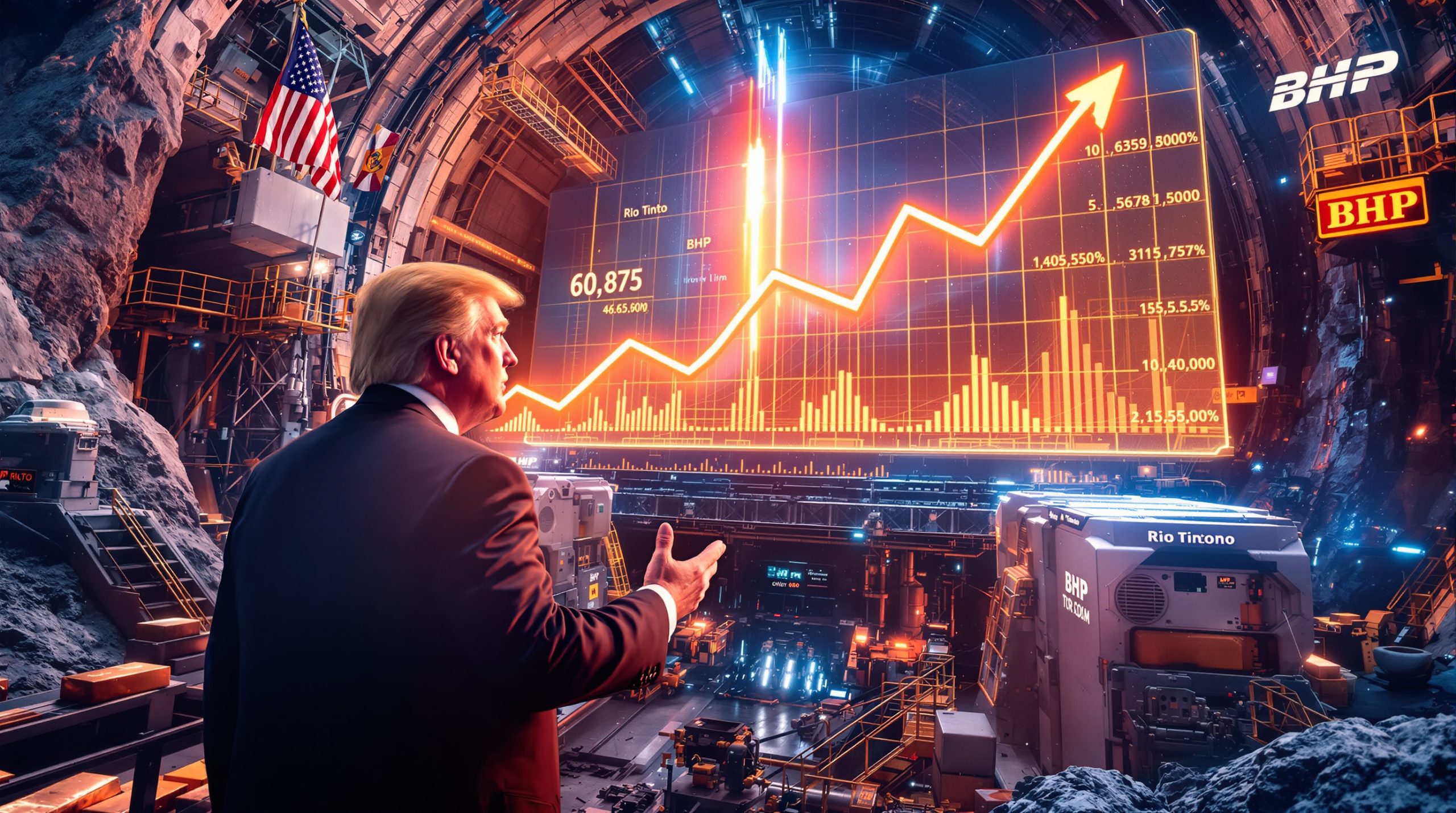How Has Silver Performed in Recent Months?
Silver has shown remarkable resilience in recent months, establishing a solid trading range between $36 and $39 since June 2023. This consolidation phase has been crucial in building a foundation for potential future price movements, with the metal demonstrating strength despite periodic market fluctuations. As of mid-2023, prices have consistently hovered around the $37.30 mark, indicating strong market support at these levels.
The precious metal's stability during this period suggests investors are maintaining confidence in silver's long-term prospects, even as short-term volatility continues across broader financial markets. This price stability represents a significant development compared to previous years when silver experienced more dramatic price swings.
Current Price Levels and Support Zones
Technical analysts note that silver's ability to maintain support above $36 represents a critical development in its price structure. The metal has successfully tested this support level multiple times without breaking lower, strengthening the case that a solid price floor has been established. This consolidation pattern typically precedes significant price movements, particularly when accompanied by gradually increasing trading volumes.
Market observers have identified several key support zones that appear to be holding firm:
- Primary support: $36.00-$36.50
- Secondary support: $34.80-$35.20
- Major resistance: $39.50-$40.00
These technical levels are closely watched by traders as potential trigger points for the next major price movement in either direction.
Comparison with Gold's Performance
While silver has been consolidating since June, gold has demonstrated a similar pattern since April, maintaining strong support between $2,300 and $2,400. This parallel consolidation aligns with historical patterns where both metals often move in the same direction, though not always at the same pace or magnitude.
Gold reached its all-time highs earlier in the current cycle, which follows the typical pattern where silver lags gold before making more dramatic price movements. This relationship between the two precious metals has been consistent across multiple market cycles:
- Gold typically leads during the initial phase of precious metals bull markets
- Silver follows with a lag of several months
- Silver's subsequent moves tend to be more explosive in percentage terms
- The gold-to-silver ratio often contracts significantly during the latter stages of bull markets
Industry experts suggest that gold price forecast provides an encouraging signal for silver's prospects, as the two metals historically maintain a correlation, albeit with silver demonstrating higher volatility.
What Factors Will Drive Silver Prices in the Coming Months?
Several key factors are converging that could significantly influence silver prices in the near to medium term. These catalysts range from monetary policy decisions to fundamental supply-demand dynamics, creating a potentially explosive environment for precious metals.
Federal Reserve Policy and Interest Rate Cuts
Market expectations for Federal Reserve rate cuts have reached near certainty, with probability estimates exceeding 85% according to industry experts. This anticipated monetary policy shift could serve as a powerful catalyst for precious metals prices in the coming months.
The relationship between interest rates and precious metals prices is well-established:
- Lower interest rates reduce the opportunity cost of holding non-yielding assets like silver
- Rate cuts typically weaken the US dollar, which often boosts dollar-denominated commodities
- The anticipation of multiple rate cuts suggests a longer-term supportive environment for silver
As one industry expert noted, "I think we're getting ready for the next move up which will likely be propelled by the announcement soon from the Federal Reserve for rate reductions… I think it's the beginning of many rate cuts to come."
This sentiment reflects the growing consensus that the Federal Reserve has reached the end of its tightening cycle and is preparing to reverse course, potentially creating a multi-year tailwind for precious metals.
Money Supply Expansion and Inflation Concerns
The implementation of rate cuts will likely require significant monetary interventions, including treasury purchases to maintain lower interest rates. This expansion of money supply could fuel renewed inflation concerns, traditionally a positive driver for precious metals as inflation hedges.
"Lower rates is obviously bullish for precious metals. It's going to be a lot of money printing from the Fed as well… to keep these interest rates low, it's not like you can just announce lower rates and they stay low. You have to get into that market and buy treasuries and keep those interest rates low," explains Michael Pichone, President at Can-Am Bullion.
This mechanism of monetary expansion presents several implications for silver price forecast:
- Increased money supply typically leads to currency devaluation
- Historical correlation shows silver appreciating during periods of money supply expansion
- Investors often turn to precious metals as a store of value during periods of monetary uncertainty
The potential scale of these monetary interventions could exceed previous episodes, particularly if economic conditions deteriorate further, requiring more aggressive central bank responses.
Economic Slowdown Indicators
Multiple economic indicators suggest a potential slowdown in both the US and Canadian economies. Declining GDP growth rates, shifting employment trends, and cooling consumer spending could trigger a flight to safety, benefiting precious metals as protective assets during economic uncertainty.
Warning signs of economic fragility include:
- Declining manufacturing indexes
- Softening labor market conditions
- Rising consumer debt delinquencies
- Contracting business investment
These signals have historically preceded periods of economic contraction, during which alternative assets like precious metals often outperform traditional financial investments as investors seek protection from market turbulence.
What Price Targets Should Investors Watch for Silver?
As silver continues to consolidate at current levels, several key price targets have emerged that investors should monitor closely. These levels represent potential inflection points that could trigger accelerated price movements.
Key Psychological and Technical Levels
The $40 mark represents a critical psychological and technical barrier for silver. Breaking through this level could accelerate price movement, potentially leading to a test of the all-time high around $50. Market analysts suggest this breakthrough could occur by the end of 2023 or early 2024.
"Once we get above 40 US I think sky's the limit. So obviously once we get above 50 the all-time high that's that's a game changer. So, I think you might all see all that happen in the end of this by the end of this year," notes Michael Pichone of Can-Am Bullion.
Technical analysts have identified several key levels to watch:
- $40: Initial major resistance and psychological barrier
- $42-45: Secondary resistance zone with limited historical price action
- $50: All-time high and major psychological level
- $60-65: Potential target once new highs are established
The speed at which these levels might be reached depends largely on broader economic developments and monetary policy decisions, but the technical setup suggests the potential for rapid price advancement once key resistance levels are breached.
Historical Perspective on Silver Bull Markets
Silver's historical price action shows that while it typically lags gold in the early stages of precious metals bull markets, it tends to deliver more explosive moves once momentum builds. Previous bull markets have seen silver outperform gold by significant margins during the final phases.
"If you look at all prior bull markets in precious metals, obviously silver catches up late, but the move that it makes is spectacular," explains industry expert Michael Pichone.
This pattern has repeated across multiple market cycles:
- 1970s bull market: Silver outperformed gold by a factor of approximately 2-3x
- 2000s bull market: Silver rose from under $5 to nearly $50, outpacing gold's percentage gains
- 2020 recovery: Silver rose over 140% from its lows, compared to gold's 40% gain
This historical tendency for silver to deliver more dramatic percentage gains than gold during bull markets makes it particularly attractive to investors seeking leveraged exposure to precious metals trends.
Long-Term Price Projections
Some market analysts project potential price increases of 10-20 times current levels during an extended bull market scenario, particularly if global monetary conditions deteriorate significantly. These projections are based on historical precedents from the 1970s when precious metals outperformed traditional investments by 25-40 times.
"I think silver does do what I think it's going to do, which is go up 10, 20 times from here," suggests Michael Pichone.
While such projections may seem extreme, they account for several potential developments:
- Complete reset of the global monetary system
- Significant devaluation of fiat currencies
- Return to some form of asset-backed monetary standard
- Widespread recognition of silver's industrial importance in green technologies
Such scenarios, while speculative, are not without historical precedent, particularly during periods of significant monetary system transitions.
How Are Retail Investors Responding to Current Silver Prices?
The behavior of retail investors often provides valuable insights into market psychology and potential future price movements. Current patterns in silver buying and selling activity reveal interesting trends that may have significant implications.
Current Buying and Selling Trends
Retail precious metals dealers report that selling activity has exceeded buying for approximately six to nine months. This trend indicates that many retail investors are taking profits rather than accumulating at current price levels, despite the bullish long-term outlook from market analysts.
"We're close about six to nine months now… more people are selling us back to us precious metals versus buying," reports Michael Pichone, who works directly with retail precious metals investors.
This selling pressure from retail investors presents an interesting market dynamic:
- Retail selling often coincides with periods of price consolidation
- Institutional investors may be accumulating during these periods of retail distribution
- Similar patterns have preceded previous significant price advances in silver
The divergence between retail sentiment and the potentially bullish fundamental outlook creates an intriguing market setup that contrarians might view as a positive signal.
Comparison to Previous High-Volume Periods
Current retail activity contrasts sharply with the high-volume buying seen during the COVID-19 pandemic and banking crisis periods. This suggests that many potential investors may be waiting for clearer signals before entering the market.
"We're not seeing a lot of buying right now… as far as new buyers, it's it's pretty slow… since since COVID we saw obviously it was crazy… during the bank failures we saw heavy heavy heavy volume… but since since then it's it's really calmed down," explains an industry expert working directly with retail investors.
Previous periods of exceptional retail demand coincided with:
- The March 2020 COVID-19 market panic
- The 2023 regional banking crisis
- The 2011 European sovereign debt crisis
- The 2008 global financial crisis
The current absence of such panic-driven demand may indicate a relatively complacent market environment, often a precursor to significant price movements.
Potential for Missed Opportunity
Market observers note that retail investors often miss the early stages of significant price movements, typically entering markets after substantial gains have already occurred. This pattern may repeat with silver, particularly if prices break above the $40 level and accelerate toward new highs.
"A lot of people missed that big move in gold and unfortunately I think they're going to miss the big move up in silver as well," warns Michael Pichone.
This psychological tendency among retail investors creates a predictable pattern:
- Initial price advances occur with limited retail participation
- Retail interest increases as prices reach new highs
- Maximum retail participation often coincides with market tops
- Early adopters typically capture the majority of gains
Understanding this cycle can help investors avoid the common trap of waiting too long to establish positions in promising markets.
What Global Economic Factors Could Impact Silver Prices?
Beyond traditional supply and demand dynamics, several global economic factors could significantly influence silver prices in the coming months and years. These macro considerations may ultimately prove more important than technical analysis in determining silver's price trajectory.
Potential Financial System Disruptions
Several potential "black swan" events could dramatically accelerate precious metals appreciation, including bank runs, financial system instability, or sovereign debt concerns. These scenarios would likely trigger defensive positioning in physical assets like silver and gold.
The global financial system faces numerous challenges:
- Record-high sovereign debt levels
- Banking system fragilities exposed during recent regional banking crises
- Declining trust in traditional financial institutions
- Growing concerns about currency stability
Any significant disruption to financial market functioning could trigger a flight to tangible assets, potentially driving silver market squeeze impact substantially higher in a compressed timeframe.
BRICS Nations and Commodity-Backed Currencies
Developments among BRICS nations regarding potential commodity-backed currencies could significantly impact precious metals markets. Any move toward backing currencies with gold or other commodities would likely create additional demand for physical precious metals.
"You got BRICS talking about issuing their currency soon. So, which is obviously going to be backed by gold and other commodities," notes Michael Pichone, highlighting a development that many Western investors may be underestimating.
The implications of such a development could be far-reaching:
- Increased central bank demand for gold and potentially silver
- Competition with the US dollar as a reserve currency
- Revaluation of precious metals to higher price levels
- Structural shift in global monetary system architecture
While the exact timeline and implementation details remain uncertain, the mere discussion of such initiatives by major economic powers represents a potentially significant development for precious metals markets.
Potential US Treasury Policy Changes
Market speculation includes the possibility of the United States revaluing gold prices or considering backing Treasury bonds with gold reserves. Such policy shifts, while currently speculative, would fundamentally alter the precious metals landscape and potentially drive prices substantially higher.
"You could have the United States revalue the price of gold in the next few months… You could have the US backing their treasuries with with gold… backing the dollar with gold," suggests industry expert Michael Pichone.
While such scenarios may seem unlikely based on recent policy directions, historical precedent exists:
- 1933: US government revalued gold from $20.67 to $35 per ounce
- 1971: Nixon ended gold convertibility of the US dollar
- 1980s: Discussion of partial gold backing during inflation crisis
Any shift toward asset-backed currency systems would represent a dramatic reversal of five decades of pure fiat currency policy, with potentially extraordinary implications for precious metals valuations.
How Does Silver Compare to Other Investment Classes?
Comparing silver to other investment options provides important context for portfolio allocation decisions. The current market environment presents unique characteristics that influence the relative attractiveness of different asset classes.
Performance Relative to Traditional Investments
While stock markets remain near all-time highs, precious metals advocates suggest this divergence creates an opportunity. Historical cycles indicate periods when precious metals significantly outperform traditional asset classes, particularly during economic downturns and monetary instability.
"The stock market's still at near all-time highs… I think they're just going to continue to push this bull market higher in stocks," observes Michael Pichone, highlighting the contrast between equity valuations and the case for precious metals.
Historical comparisons show distinct periods of outperformance:
- 1970s: Precious metals outperformed stocks by substantial margins during stagflation
- 2000-2011: Gold and silver delivered superior returns during a period of stock market turbulence
- 2020-present: Precious metals have provided portfolio stabilization during periods of market volatility
This cyclical relationship between different asset classes suggests the potential for a rotation from traditional financial assets to tangible assets if economic conditions deteriorate.
Risk-Reward Assessment
The current market environment presents an asymmetric risk-reward profile for silver compared to stocks. While equity markets could potentially gain another 10-15% from current levels, they also face potential drawdowns of 60-70% during severe economic contractions, according to some analysts.
"Stocks can go up another 10-15% from here, but that doesn't really excite me because I think the downside in stocks is enormous. I think you could see a wash out of 60 to 70% in in a year or two," cautions Michael Pichone.
This risk assessment considers several factors:
- Current equity valuations relative to historical norms
- Economic cycle positioning
- Monetary policy trajectory
- Debt levels throughout the economy
When viewed through this lens, silver's potential upside compared to its downside risk may present a more favorable proposition than traditional financial assets in the current environment.
Portfolio Diversification Benefits
Silver offers diversification benefits that become particularly valuable during periods of financial stress. Its historical tendency to move independently of traditional financial assets makes it an effective portfolio component for risk management.
The diversification value of silver stems from several characteristics:
- Low or negative correlation with stocks during crisis periods
- Tendency to perform well during inflationary environments
- Physical asset status outside the financial system
- Dual role as both monetary and industrial metal
These attributes make silver a uniquely versatile portfolio component that can provide both protection during market turbulence and appreciation potential during certain economic conditions.
How Should Investors Approach Silver in Their Portfolios?
For investors considering silver exposure, developing a thoughtful approach aligned with personal financial goals and risk tolerance is essential. Several strategies can help optimize silver investments regardless of market conditions.
Dollar-Cost Averaging Strategy
For investors new to precious metals, a measured approach through regular purchases over time can help manage volatility while building a position. This strategy allows for accumulation regardless of short-term price fluctuations.
"Start buying a little bit out of a time," advises Michael Pichone, suggesting a gradual approach to building precious metals positions.
The benefits of dollar-cost averaging into silver include:
- Reducing the impact of timing decisions
- Building positions at various price points
- Creating psychological comfort during price volatility
- Establishing a disciplined investment approach
This methodical strategy is particularly well-suited to volatile assets like silver, where price swings can be dramatic and unpredictable in the short term.
Physical vs. Paper Silver Considerations
Investors should understand the differences between physical silver ownership and paper alternatives like ETFs or futures. Physical ownership provides direct possession without counterparty risk, while paper investments offer liquidity and convenience but introduce additional risk factors.
Key considerations when choosing between physical and paper silver include:
Physical Silver Advantages:
- Direct ownership without counterparty risk
- Complete control of the asset
- Protection from financial system disruptions
- Potential premium appreciation during supply shortages
Paper Silver Advantages:
- Greater liquidity for trading
- Lower transaction costs
- Easier storage logistics
- Simpler integration with existing investment accounts
Many experienced precious metals investors recommend a combination approach, with core holdings in physical metal supplemented by paper investments for trading purposes.
Allocation Recommendations
While specific allocation percentages depend on individual circumstances, precious metals advocates suggest that the current economic environment warrants a more significant allocation than traditional portfolio models might recommend, particularly given the potential for monetary instability.
Factors influencing appropriate allocation levels include:
- Overall investment timeline
- Risk tolerance
- Existing portfolio composition
- View on monetary system stability
- Need for liquidity
Conventional financial planning typically suggests 5-10% portfolio allocation to precious metals, while those more concerned about monetary system risks might consider allocations of 15-25% or higher depending on individual circumstances.
"I don't want people to just blindly jump in and and start investing in precious metals, but do the homework. Start now. Take it serious," advises Michael Pichone, emphasizing the importance of educated decision-making.
What Historical Lessons Apply to Today's Silver Market?
History provides valuable context for understanding current market dynamics and potential future scenarios. Several historical patterns may offer insights into silver's prospects in the current environment.
Lessons from the 1970s Precious Metals Bull Market
The 1970s precious metals bull market provides instructive parallels to current conditions, with inflation concerns, monetary uncertainty, and geopolitical tensions driving significant price appreciation. During this period, precious metals substantially outperformed traditional investments.
"The 1970s, gold and silver outperformed stocks by 25 to 40 times," notes Michael Pichone, highlighting the potential magnitude of precious metals bull markets under certain conditions.
Key similarities between the 1970s and today include:
- Significant government spending and monetary expansion
- Concerns about currency stability
- Geopolitical tensions creating economic uncertainty
- Transition away from established monetary frameworks
While historical analogies are never perfect, the structural similarities suggest the potential for comparable outcomes if similar monetary conditions develop.
Fiat Currency Cycles and Their Endpoints
Historical analysis of fiat currency systems suggests they typically end with significant inflation or hyperinflation. Current global debt levels and monetary expansion create conditions similar to previous cycles that preceded major precious metals bull markets.
"Fiat currencies always end in a disaster. Major major inflation leading to hyperinflation. I think we're at the beginning stages of hyperinflation now," suggests Michael Pichone, expressing a view shared by many precious metals advocates.
This perspective is based on historical patterns observed across multiple currencies and economic systems:
- No fiat currency has maintained its purchasing power over long periods
- Currency debasement has been a consistent pattern throughout monetary history
- Modern monetary theory has accelerated the expansion of fiat currency creation
- Historical fiat currency systems have average lifespans of approximately 30-40 years
The current US dollar-centered global monetary system has operated without gold backing since 1971, placing it in the latter stages of typical fiat currency lifespans according to historical patterns.
The Psychology of Market Timing
Many investors miss significant moves in precious metals because they wait for confirmation through higher prices, creating a psychological barrier to entry. By the time most retail investors feel comfortable entering the market, substantial gains have often already occurred.
This psychological pattern creates a predictable market dynamic:
- Initial price movements occur with limited public participation
- Media attention increases as prices reach new highs
- Maximum public interest coincides with significant price advances
- New investors often enter at elevated price levels
Understanding this psychological cycle can help investors overcome the natural tendency to wait for confirmation before taking action, potentially allowing for better entry points in developing bull markets.
"This is the end of an old system. This is a reset that is going to happen in the next few years, if not next year," suggests Michael Pichone, highlighting the potential timeline for significant monetary changes.
FAQs About Silver Price Forecasts
When might silver break through the $40 price level?
Market analysts suggest silver could break through the $40 level by late 2023 or early 2024, depending on monetary policy decisions and economic conditions. This timeline aligns with expectations for Federal Reserve rate cuts and potential economic slowdown indicators. However, unexpected economic or geopolitical developments could accelerate or delay this timeline.
How does silver typically perform during recessions?
Silver often experiences initial selling pressure during the early stages of recessions as investors seek liquidity, but historically has performed strongly during the recovery phase and monetary response periods. This "first down, then up" pattern reflects silver's dual nature as both an industrial metal (vulnerable to economic slowdowns) and a monetary metal (benefiting from stimulus responses).
What silver-to-gold ratio indicates silver is undervalued?
Historically, when the silver-to-gold ratio exceeds 80:1 (meaning it takes 80 ounces of silver to buy 1 ounce of gold), silver has been considered undervalued relative to gold. The ratio has been above this level for much of the past decade, suggesting potential for silver to outperform gold if the ratio reverts toward historical averages of 40-60:1.
How might central bank digital currencies affect silver prices?
The implementation of central bank digital currencies could potentially accelerate precious metals demand if investors perceive them as threats to financial privacy or vehicles for negative interest rate policies. CBDCs would give central banks unprecedented control over monetary policy implementation, potentially increasing demand for assets outside the digital financial system.
What percentage of a portfolio should be allocated to silver?
While individual circumstances vary, precious metals advocates suggest 5-20% of investment portfolios could be allocated to precious metals in the current economic environment, with silver comprising a portion of that allocation. Conservative investors might target the lower end of this range, while those more concerned about monetary system stability might consider higher allocations.
Additional Considerations for Silver Investors
Industrial Demand Factors
Beyond its monetary role, silver's industrial applications continue to expand, creating additional demand drivers that gold doesn't share to the same degree. Key industrial growth areas include:
- Solar panel production (using silver paste conductors)
- Electric vehicle manufacturing (multiple silver components)
- 5G network infrastructure (silver-based conductivity applications)
- Medical applications (antimicrobial properties)
These industrial applications create a demand floor for silver that complements its monetary role, potentially providing additional price support during economic expansion phases.
Supply Constraints and Mining Economics
Silver mining economics create interesting supply dynamics that may influence future prices. Unlike gold, which is primarily mined as a primary product, approximately 70% of silver production comes as a byproduct of mining other metals like copper, lead, and zinc.
This production structure means:
- Silver supply doesn't always respond directly to silver prices
- Production costs are often calculated on a "byproduct credit" basis
- Supply elasticity is lower than for primarily-mined metals
- Production decisions may be driven by base metal economics rather than silver prices
These factors create the potential for supply constraints if industrial demand continues to grow, particularly in green technology applications.
Seasonal Patterns in Silver Prices
Silver typically exhibits seasonal price patterns that investors may consider when timing purchases or sales:
- January-February: Often strong months as investment demand increases
- March-April: Frequently weaker as tax-related selling occurs
- June-July: Traditionally weaker summer months
- August-September: Historical tendency for price strength
- November-December: Variable performance influenced by tax considerations
While these patterns don't repeat with perfect consistency, awareness of seasonal tendencies can provide additional context for interpreting price movements throughout the year.
Geopolitical Considerations
Silver prices can be influenced by geopolitical developments that affect either monetary confidence or industrial supply chains. Current factors to monitor include:
- Resource nationalism in key silver-producing countries
- Trade policy changes affecting industrial metals
- Currency competition between major economic blocs
- Sanctions policies that might restrict metal movements
These geopolitical factors add another layer of complexity to silver squeeze strategies beyond traditional supply-demand analysis.
By considering these multiple dimensions of the silver market, investors can develop a more comprehensive understanding of the factors likely to influence prices in both the near term and long term, enabling more informed investment strategy components regarding this unique precious metals analysis.
Want to Stay Ahead of Major Mineral Discoveries?
Don't miss potential silver breakout opportunities like the ones discussed in this article. Visit Discovery Alert's dedicated discoveries page to understand how significant mineral announcements can lead to substantial market returns, powered by the proprietary Discovery IQ model that turns complex mining data into actionable insights.
AI:
Interested in Catching the Next Silver Price Surge?
Don't miss out on major mineral opportunities like the potential silver breakout discussed in this article. Discovery Alert's proprietary Discovery IQ model delivers real-time notifications on significant ASX mineral discoveries, helping investors position themselves ahead of market movements. Explore how historic discoveries have generated substantial returns by visiting Discovery Alert's discoveries page.




